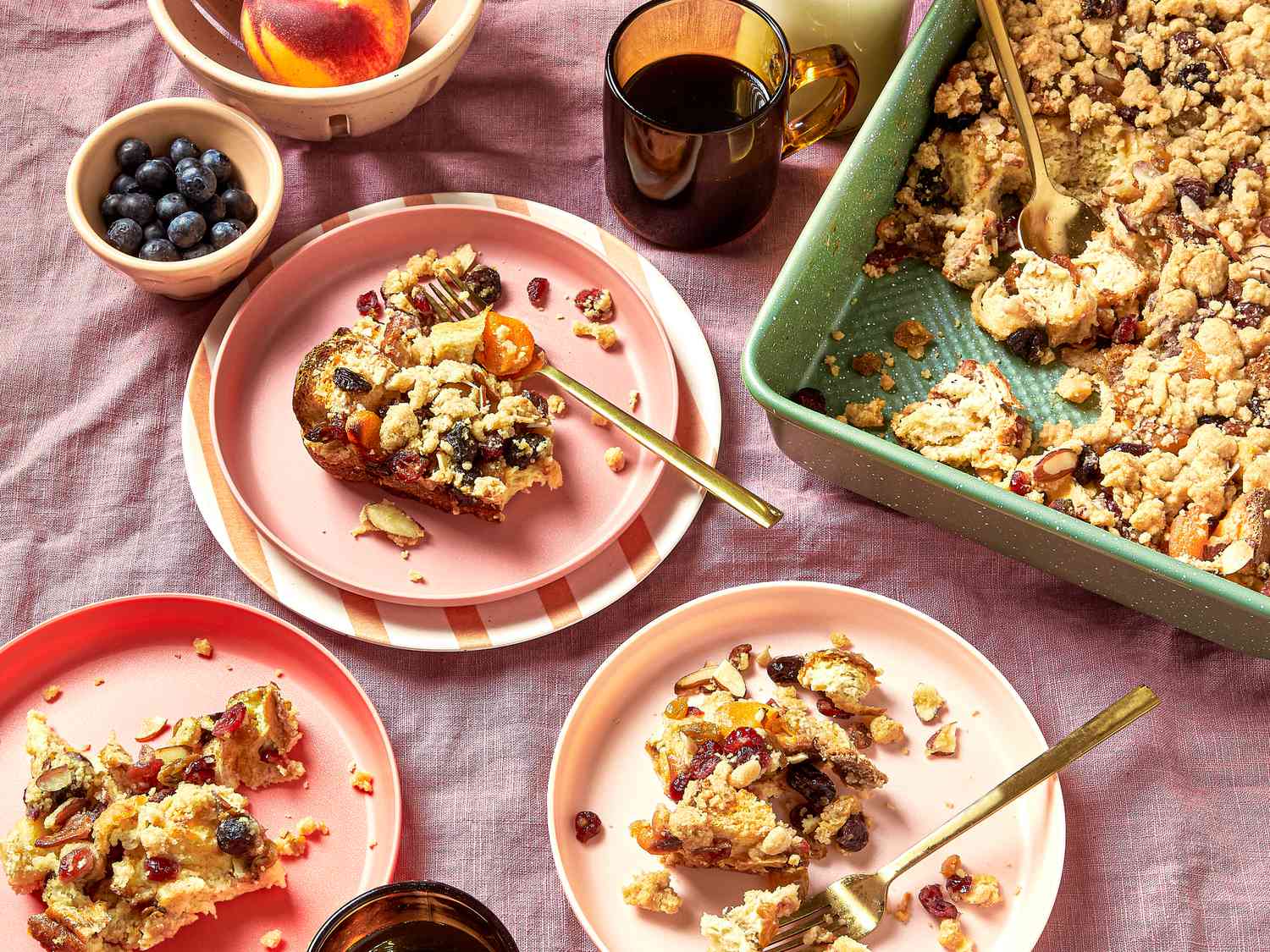
[ad_1]

Why It Works
- Soaking the challah in the custard overnight allows the bread to fully hydrate, resulting in a tender, moist casserole.
- An easy streusel topping of flour, brown sugar, and butter provides crunch and sweetness to the casserole.
A large, golden loaf of challah is glorious. The Jewish bread—a staple for Shabbat and holidays—is enriched with eggs and oil, and its plush crumb makes it particularly delicious for eating on its own or turning into French toast. As a child, I watched my mom make challah from scratch; she’d carefully braid the dough, then set it aside to proof before baking. I eagerly tore into the loaves when they were just out of the oven, relishing each bite of the tender, freshly baked bread. Though I still love challah and eat it frequently, I rarely bake it at home. To satiate my challah cravings, I often buy large loaves on a whim, which leaves me with more than enough bread to eat for weeks.
Serious Eats / Lorena Masso
Some people might wrap up the extra bread and stash it in their freezer, or turn the loaf into breadcrumbs, French toast, or croutons. I, however, prefer to turn my challah into a custardy breakfast casserole for my friends and family. Made with a few fridge and pantry staples, this easy dish—which is packed full of dried fruit and topped with a simple streusel—takes all of 15 minutes to prep before you pop it into the fridge to sit overnight. For that reason, it’s my go-to breakfast for holidays and special occasions when I have plenty of people to feed, but it’s easy enough to make any time you have challah—whether leftover or purchased just for this bake. Here’s how to make it, plus some tips for getting it just right.
4 Tips for Making a Tender Challah Breakfast Casserole
Don’t worry about drying the bread. Many French toast, casserole, and bread pudding recipes call for stale or dry bread, but in my testing, I found little difference between the casserole made with fresh bread and the one prepared with older bread. Using drier bread may be beneficial for French toast, as fresh bread can fall apart easily after soaking. But that doesn’t matter here, since there’s no dipping and frying involved. So use whatever bread you have on hand, whether that’s fresh or stale.
Serious Eats / Lorena Masso
Reach for your favorite dried fruit. For a touch of sweetness and a pop of color, I incorporate dried fruit into my casserole. I like to use apricots, cherries, golden raisins, and cranberries, but you can use whatever dried fruit you have on hand or customize the mix to create the flavor profile you want. Sometimes, I make a hamantaschen-inspired casserole by using prunes and poppy seeds or give it Rosh Hashanah vibes with fresh chopped apples. For a post-Pesach weekend brunch, I’ll swap the almond extract for an extra teaspoon of cinnamon and toss in walnuts and apples for a flavor that’s reminiscent of charoset.
Soak it overnight. When I first started making this challah breakfast casserole, I par-baked it the night before, then popped it into the oven to finish baking the morning I had to serve it. It was my go-to method, until my testing revealed that an overnight soak resulted in a softer casserole with a custardy texture. It may be tempting to skip the overnight soak, but it really is worth taking the time to let the bread sit in the custard for a tender, delicious casserole with no dry spots.
Serious Eats / Lorena Masso
Top it with a streusel. For extra crunch, I top my challah breakfast casserole with a simple streusel of flour, brown sugar, and butter. Though I prefer to make the streusel topping in a food processor, you can also make it by hand by tossing the dry ingredients with butter until it’s a crumbly mixture. The topping brings a satisfying crunch and just enough sweetness, making it unnecessary to serve the casserole with a sauce or syrup.
[ad_2]